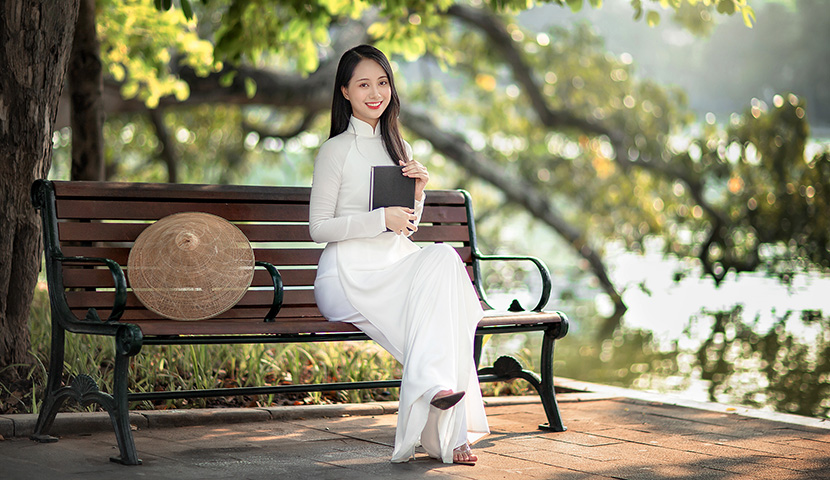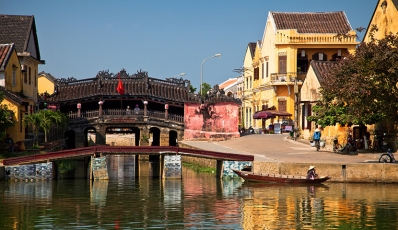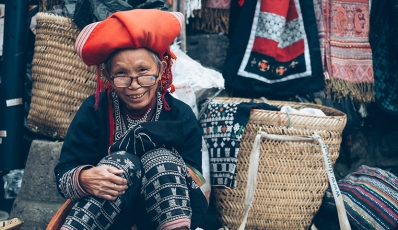Ao Dai is a beautiful and elegant outfit that holds a special place in Vietnamese culture. Whether it's for a wedding or a formal event, wearing this traditional dress is a way to honor one's heritage and celebrate the rich history of Vietnam.
In this article
How to pronunciation?
The structure of Ao Dai
History of Ao Dai
The first version of Ao Dai
Ao Ngu Than
Ao Dai Lemur
Ao Dai for Men
Ao Dai Today
When to dress Ao Dai
Ao Dai in Traditional color
Symbol of Vietnamese
*****
What is Ao Dai?
Ao Dai is the traditional Vietnamese costume that has gained popularity around the world. It is a symbol of the country's rich culture and heritage. Just like other nations, Vietnam has its own unique dress that distinguishes it from others. The Japanese have Kimono, the Koreans have the Hanbok, and the Chinese have the Cheongsam, while the Vietnamese proudly own the Ao Dai.
How to pronunciation " Ao Dai" ?
The word "Ao Dai" is pronounced differently in the North and South regions of Vietnam. In the North, it is pronounced as "Ao Zai," while in the South, it is pronounced as "Ao Yai." This dress is worn by people of all ages, including students, flight attendants, and even men, although it is more commonly worn by women.

Ao Dai - Vietnam traditional dress
Women wear Ao Dai for official ceremonies, conferences, and especially weddings. At weddings, brides often wear a red Ao Dai as a symbol of happiness and luck. This costume has gained fame and recognition around the world and has become a representation of Vietnam's culture and traditions.
Ao Dai is not just a dress; it is a symbol of Vietnam's rich cultural heritage. Its popularity has spread far beyond the country's borders, and it has become an iconic representation of Vietnam's identity.
The structure of Ao Dai
The Ao Dai is a traditional Vietnamese attire that consists of two pieces - pants and tunic. The pants have a high waist and are loose-fitting, held in place by an elastic belt sewn at the top. The tunic, on the other hand, covers the entire body except for the head, hands, and feet. It is designed to bring out the curves of the body and is made up of a Mao collar, two sides that descend to above the ankles, and long sleeves. The tunic is closed discreetly on the side using small snaps.
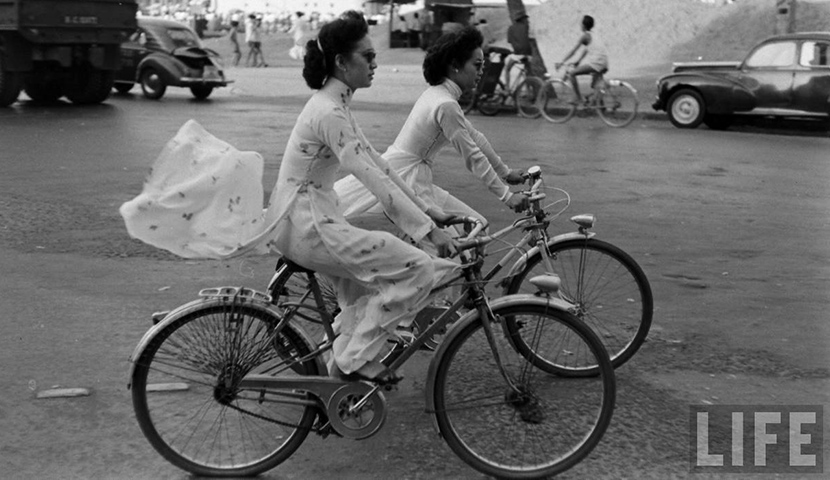
Ao Dai Vietnam in Saigon street city in 1950s
The slit of the tunic generally rises a few centimeters higher than the pants, adding a touch of elegance to the overall look. The Ao Dai is usually associated with female uniforms and is predominantly white. However, it can also be found in various patterns and made of different kinds of fabric, all of which are flexible, light, and airy.
The Ao Dai is not only a symbol of Vietnamese culture but also a representation of its rich history. The attire has undergone several changes over the years but has managed to retain its essence. Its unique design and style have made it popular not only in Vietnam but also across the world.
History of Ao Dai
The first version of Ao Dai
The precursor to the iconic Ao Dai, a traditional Vietnamese garment, can be traced back to the 17th century. Initially known as the Áo Giao Lãnh, the dress was four-sided and worn with a black skirt, halter (Áo Yếm), and a belt.

The first versions of Ao Dai Vietnam
As the country became divided in the 18th century, with the Trinh family ruling the northern territory and the Nguyen dynasty reigning in the south, the dresses worn by women in the North were inspired by Chinese imperial costumes.This marked the beginning of the evolution of the Ao Dai into the elegant and sophisticated garment that it is known as today.
Ao Ngu Than
In 1744, Nguyen Phuc Khoat, the lord of Vietnam, established the national costume that distinguishes itself from the Chinese attire. He introduced a version of Ao Dai, a traditional Vietnamese garment, for both men and women. This attire was nicknamed the garment of four sides (Áo Tứ Thân) or that of five sides (Áo Ngũ Thân).
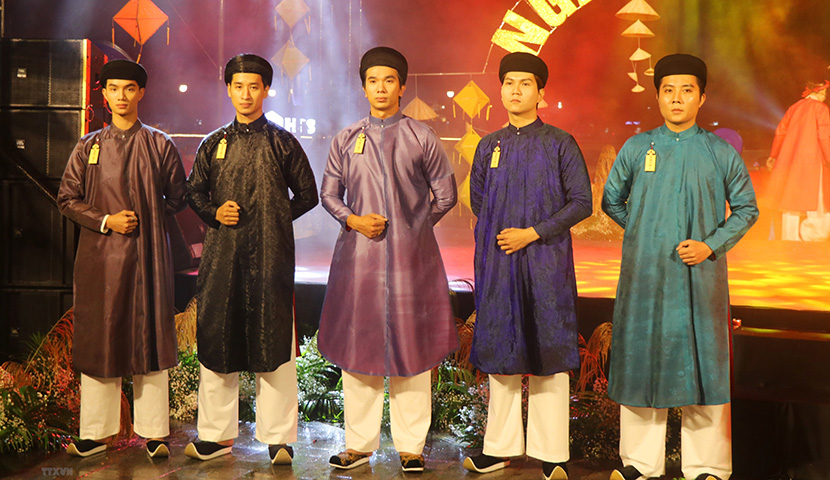
Ao dai ngu than for men
The wearing of pants was made compulsory for both genders, while the wearing of skirts was deemed immoral and hence prohibited. Today, Vietnamese men often don the Ao Dai for special occasions like weddings and funerals. This attire remains an important aspect of Vietnamese culture and heritage.
Ao Dai Lemur
Fashion designer Cat Tuong made a significant contribution to the evolution of the traditional Vietnamese garment known as Ao Dai from 1939 to 1943. During this period, Cat Tuong created a new variant of the Ao Dai called the Ao Dai Lemur. The designer, who graduated from the Higher School of Fine Arts of Indochina, introduced a range of new styles and forms for the Ao Dai.
The Ao Dai Lemur was met with mixed opinions due to its use of brightly colored fabric and its body-hugging design. The number of sections in the garment was reduced from five to two, and western elements such as puffed sleeves and boat neck or lotus leaf-shaped collars were added. The buttons were also modernized. These changes caused a scandal and were considered by some to be too indecent.
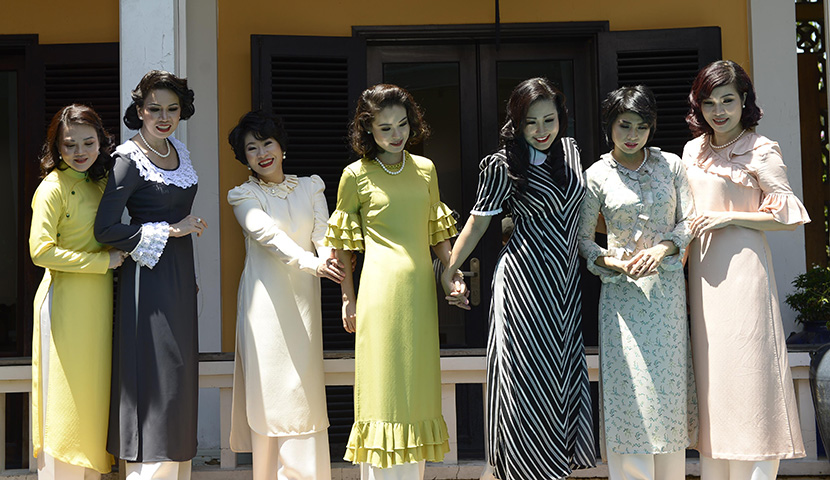
Ladies in Ao Dai Lemur
Despite the controversy surrounding the Ao Dai Lemur, it was a significant step forward in the evolution of the garment. Cat Tuong's innovative designs paved the way for future variations of the Ao Dai, which continue to be an important part of Vietnamese culture and fashion. Today, the Ao Dai is recognized as a symbol of Vietnamese beauty and elegance, and it is often worn on special occasions such as weddings and festivals.
In the 1950s, Tran Kim and Dung, two tailors from the fashion house Thiet Lap, introduced dresses with raglan sleeves in Saigon. This style quickly became popular and remains a preferred choice today. In the 1960s, the trend was further popularized by Madame Tran Le Xuan, the First Lady of the country, who removed the collar and introduced low-cut models.
During the 1960s and 1970s, the Ao Dai, a traditional Vietnamese costume, was known for its comfort and became popular in a narrowed size and as a mini version. However, it wasn't until the 1990s that the Ao Dai experienced a resurgence in popularity, thanks to the work of stylists Minh Hanh and Sy Hoang.

Ao Dai Vienam during 1960s
Today, the Ao Dai is a common sight at parties and events, as well as among staff in the tourism sector. It has even become the compulsory uniform for high school girls. The enduring popularity of the Ao Dai is a testament to its timeless elegance and comfort, as well as its rich cultural heritage.
Ao Dai for Men
The traditional Vietnamese garment, Ao Dai, is often associated with women's fashion. However, it was originally created for both men and women to wear. Over time, Ao Dai for men lost popularity, leaving the impression that it is exclusively a women's garment.
The male version of the Ao Dai is known as the Ao Ngu Than. It features a high, straight, and square neck that symbolizes the integrity of a gentleman. Unlike the Chinese cheongsam, which uses fabric buttons, the Ao Ngu Than has five buttons made of metal, pearl, wood, or other materials. The shirt has five bodies, representing the wearer, mother, and father. The garment is not tight-fitting but rather comprehensive and can be worn with wide or narrow sleeves as per the wearer's preference.

Ao Dai for men during 1920s
The Ao Ngu Than is typically elegant and without neck frills or sleeves. The wearer often pairs it with a white shirt underneath to showcase cleanliness on the inside. The traditional Vietnamese concept of hiding what is fair on the inside is beautifully represented in this garment. Additionally, the Ao Ngu Than always comes with towels.
While women's stand-up collar Ao Dai is more widely recognized as a traditional national costume due to legal documents and dress standards, men's Ao Dai is still present in traditional Vietnamese festivals and weddings. In fact, during the 2006 APEC summit held in Vietnam, leaders of APEC economies wore Vietnamese men's clothing in traditional costumes of the host country during the ceremony of announcing the Joint Statement.
While Ao Dai for women may be more popularly known, the male version of this traditional Vietnamese garment holds its own significance and beauty. The Ao Ngu Than represents the integrity of a gentleman and showcases the traditional Vietnamese concept of hiding what is fair on the inside.
Ao Dai Today
The Ao Dai, a traditional Vietnamese dress, has undergone a transformation in recent times. Nowadays, it has become so prevalent that there are various versions available for each age category. The dress is not just limited to young girls but is also popular among middle-aged and older women, who have their own models with precise colors. Mature women tend to prefer darker colors and thicker fabrics, whereas high school girls often opt for white ao dai, a color symbolic of purity and virginity.
Despite facing competition from new Vietnamese clothing models, the ao dai has found a stable place in the life of Vietnamese people. It has become an integral part of their culture and heritage. The image of the Ao Dai has even transcended the country's borders and has become a symbol of Vietnam, following in the footsteps of Vietnamese people living in foreign countries.
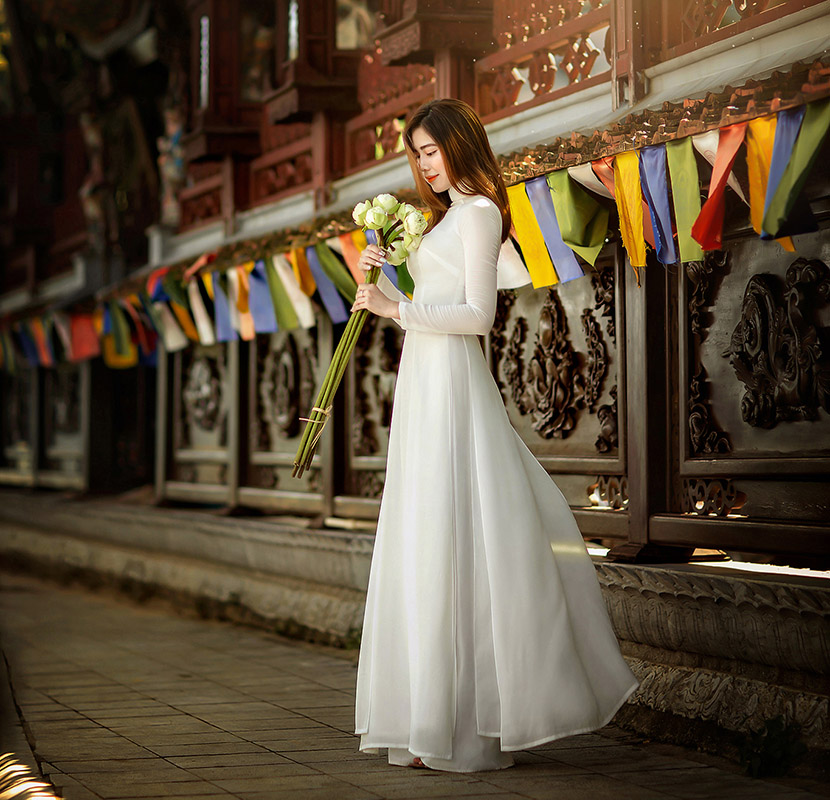
The charming and modern Ao Dai today
In international beauty contests, a representative must wear the ao dai during her parade. This dress has also become a source of inspiration for fashion designers, including renowned names such as Giorgio Armani, Ralph Lauren, and Calvin Klein. The ao dai is undoubtedly a unique model that transcends the limits of time and space.
In 1995, the Vietnamese Ao Dai received the honor of being awarded the prize for "best traditional costume" at the International Beauty Competition. This recognition further cemented the ao dai's place as an iconic dress that represents Vietnamese culture and heritage.
When to dress Ao Dai ?
In Vietnam, wearing Ao Dai is reserved for special occasions such as national holidays, weddings, and important ceremonies like graduations. Originally worn by both men and women, nowadays it is mostly women who wear this traditional outfit. However, men may still wear it on rare occasions such as their wedding day.
Ao Dai is an important part of Vietnamese clothing culture and is especially popular among women who wear it as a long dress. It has become a uniform of sorts for students in certain educational institutions, as well as administrative staff such as teachers and flight attendants. Women wear it for formal events like conferences and weddings.
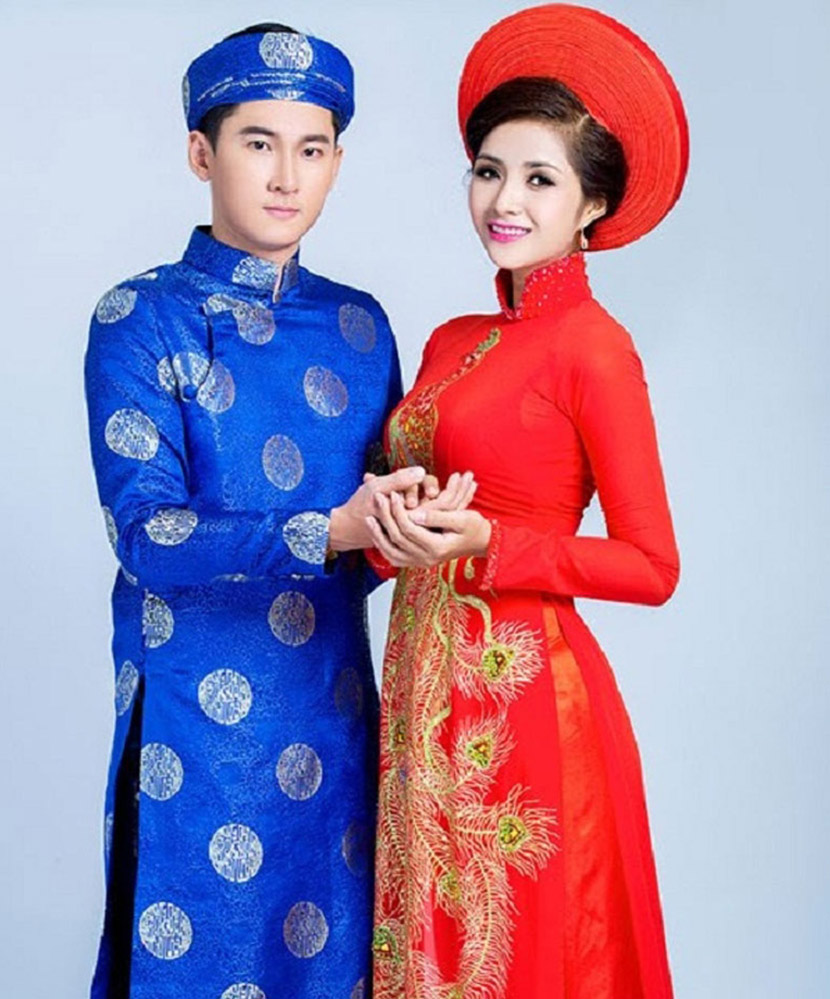
Ao Dai for bride and groom in their wedding
In traditional Vietnamese weddings, the husband usually wears a blue Ao Dai with a hat while the bride wears a red one. Each color has its own meaning and is considered an age indicator. For example, white Ao Dai is highly valued by Vietnamese students while brides tend to choose darker colors with intricate details.
Ao Dai in traditional color
The Ao Dai, a traditional Vietnamese dress, is known for its vibrant colors that signify different things. For instance, white is worn by young girls to symbolize their purity, while soft pastel colors are worn by older and unmarried girls. Married women wear dark multicolored dresses, and future brides wear red or pink during the ceremony, which are typical colors of marriage. It's fascinating to see how the color of this dress can indicate the age and status of the woman wearing it. The Ao Dai is truly a beautiful representation of Vietnamese culture and tradition.
Symbol of Vietnamese Beauty
The Ao Dai Vietnam is a true symbol of the country's culture and fashion. In the 21st century, this dynamic piece of clothing has become a versatile outfit that can be worn anywhere, from the office to school and even for special occasions at home. What's great about it is that it's not cumbersome or complicated to wear, as it has been modernized to suit the current times. You can pair it with silk pants or soft cloth and complete the look with high heels on your feet. For more formal occasions, you can add gowns, turbans, or even Western crowns as you please.

Ao Dai Vietnam traditional dress during 1930s
Before 1975, the white Ao Dai was mandatory attire for high school girls in South Vietnam. However, after the unification day, some schools opted to change their uniform to something else. In the North, most schools only require girls to wear the Ao Dai on the second day of the flag salute. Despite these changes, the modern Ao Dai still holds a special place in Vietnam's fashion scene.
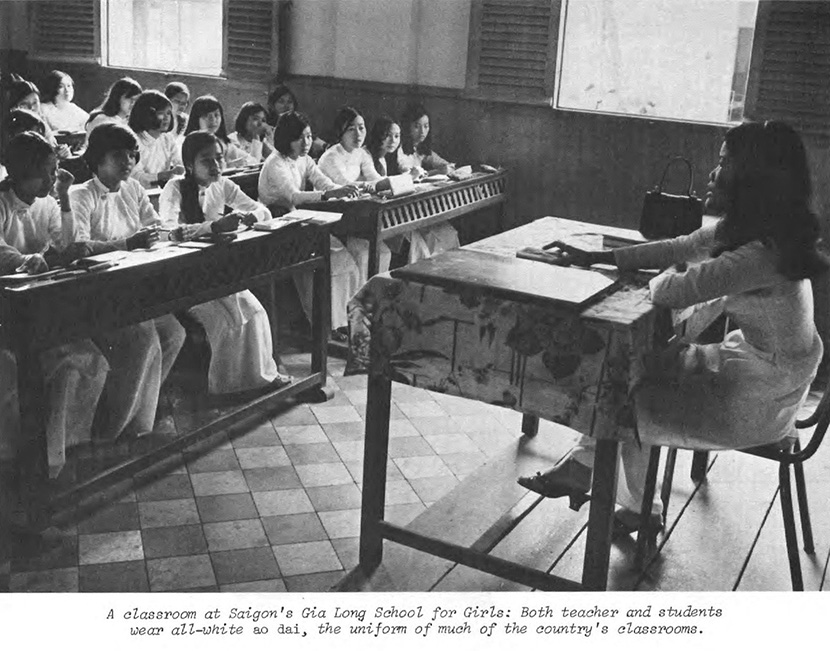
The modern Ao Dai is designed to honor every wearer. The upper body is fitted, while the two ties are soft and flowy on wide pants. The two rips on the waistline make it comfortable for the wearer to move around, creating a slender and feminine appearance. The whole body is covered with soft silk, making it both tight and sexy as it reveals the waistline.
What makes the modern Ao Dai even more special is that it is personalized for each person who wears it. Every sewing thread is meant for one person only, and the tailor has to take careful measurements to ensure a perfect fit. Once the sewing is complete, the outfit must be tried on for small repairs to be made.
Ao Dai Vietnam is more than just a piece of clothing. It represents the country's rich culture and fashion sense, and it has evolved to suit modern times while still retaining its original charm. It's no wonder why it's become a beloved symbol of Vietnam.
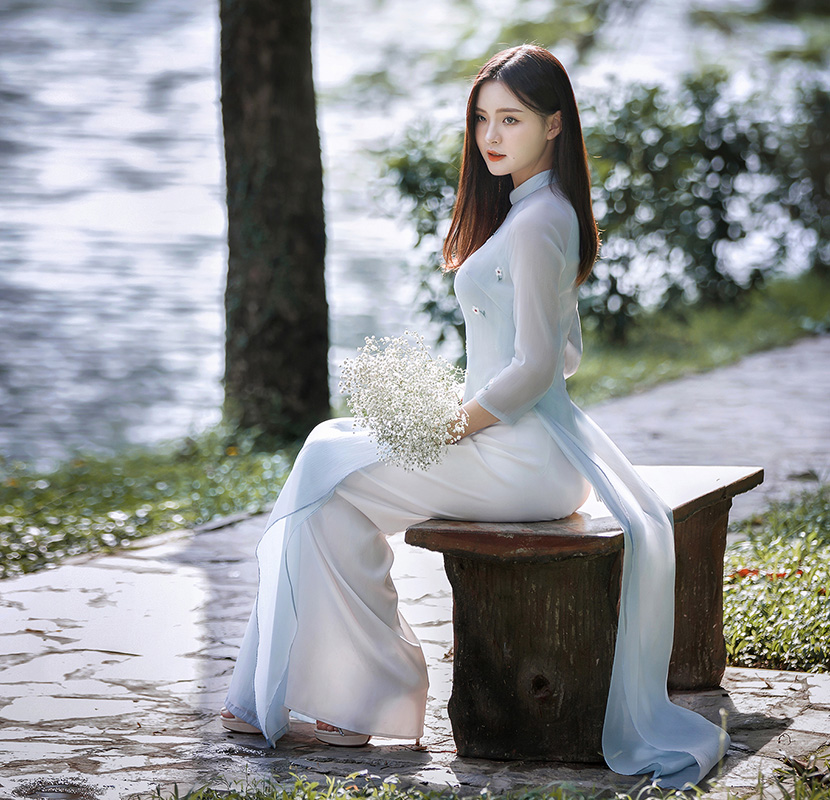
The charming Ao Dai Vietnam
If you are looking for the place to get a beautiful Ao Dai, first, you have find a tailor who fully understands your measurements. This is why it's not a ready-to-wear garment. Below are our suggestions for some useful addresses where you can buy or have an Ao Dai sewn in Hanoi, Ho Chi Minh, and Hoi An.
Not only is the Ao Dai a cultural characteristic of Vietnam, but it also reflects the beauty of the wearer. It's the perfect combination of elegance and grace. So whether you're looking to buy or have one custom made, these cities are the perfect places to find the perfect Ao Dai. Don't miss out on this incredible opportunity to experience the beauty and culture of Vietnam through its traditional dress.
Ho Chi Minh City:
Ao Dai Cam Tu
Address: 382/16 Điện Biên Phu Street, District 10, Ho Chi Minh City
Tel: +84. 903 698 968
Opening Hour: 09.00 – 21.00
Ao Dai Xua và Nay
Address: 601 Nguyen Dinh Chieu Street, 3 District, Ho Chi minh City
Tel: +84 28 383 048 77
Opening Hour: 09.00 – 21.00
Ao Dai Hanh
Address: 6/3 Cach Mang Thang Tam Street, District 1, Ho Chi Minh City
Tel: +84. 909.601.527
Opening Hour: 09.00 – 21.00
Ha Noi Capital
Ao Dai Thuy Linh
Address: 179 Ton Đuc Thang Street, Đong Đa, Ha Noi
Tel: +84 796 380 331
Opening Hour: 09.00AM – 20.00PM
Ao Dai Thanh Mai
Address: 428 Bach Mai Street, Hanoi
Tel: +84 24 2212 2859
Opening Hour: 09.00AM – 20.00PM
Ao Dai Phan Hai
Address: 43 Le Van Huu Street, Hanoi.
Tel: +84 24 3943 8900
Opening Hour: 09.00AM – 21.00PM
Hoian Ancient town
Yaly Couture
Address: 47 Nguyen Thai hoc Street, Hoi An Town
Tel: +84 235 2212 474
Opening Hour: 09.00AM – 21.00PM
Bao Khanh Silk
Address: 101 Tran Hung Dao Street, Hoi An Town
Tel: +84. 235 3861 818
Opening Hour: 08.00 – 21.00
A Dong Silk
Address: 40 Le Loi Street, Hoi An Town
Tel: +84 235 3910 579
Opening Hour: 09.00AM – 21.00PM
